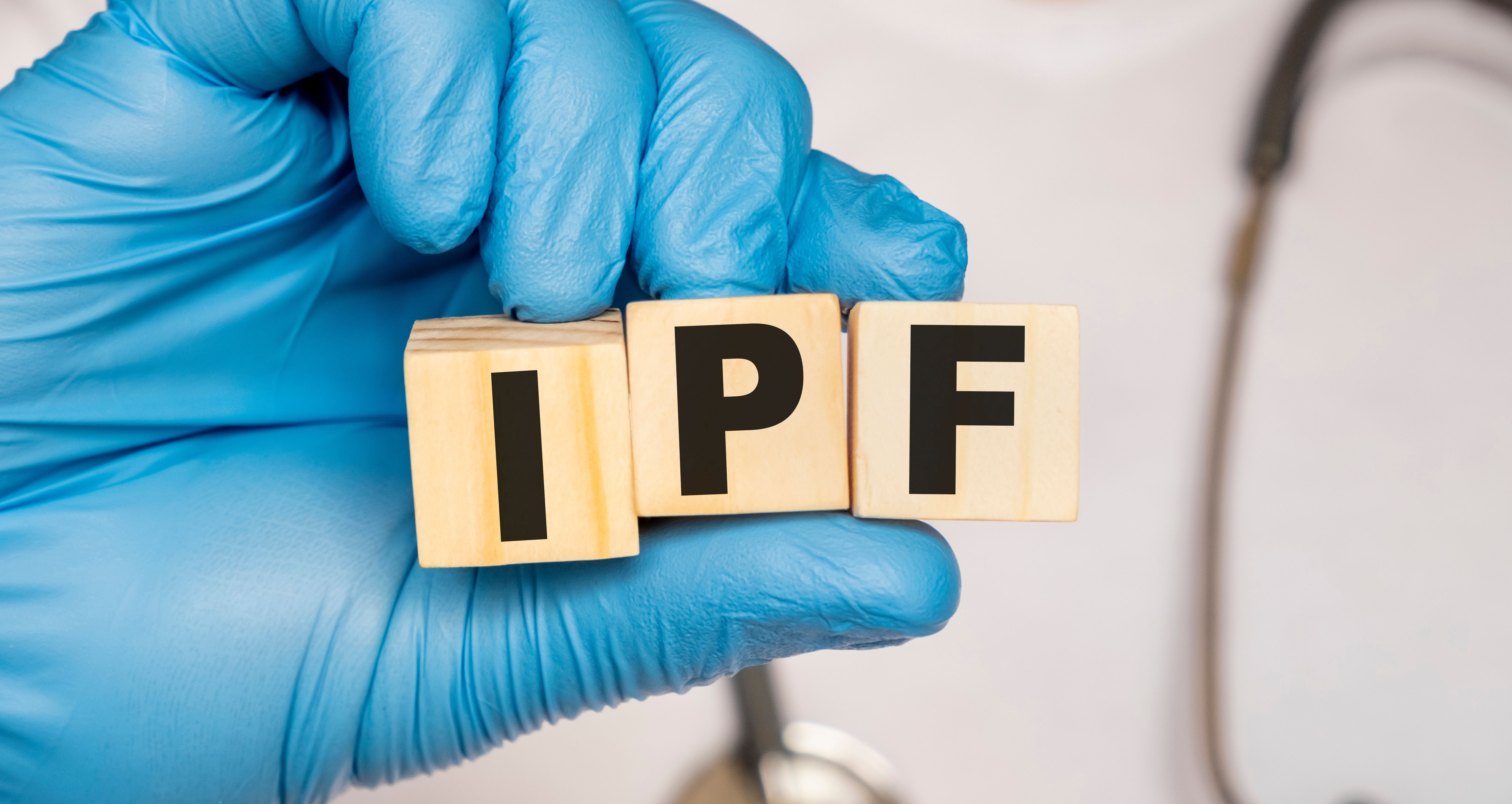News
Article
Study Identifies P2RX7 as Key Player in IPF Pathogenesis, Therapy
Author(s):
Research highlighted the pivotal role of P2RX7 in driving inflammatory and fibrotic processes in idiopathic pulmonary fibrosis (IPF).
P2RX7, a purinergic receptor involved in the release of interleukin (IL)-1–like cytokines, plays a significant role in idiopathic pulmonary fibrosis (IPF), according to research published in Biomedicine & Pharmacotherapy.1
The research suggests that adenosine triphosphate (ATP), an alarmin abundantly produced in the lungs of patients with IPF, activates the P2RX7 receptor. This activation links macrophages to the fibrogenic and immunosuppressive environment characterized by IL-1–like cytokines and TGFβ. This creates an environment that promotes scarring and suppresses immune responses near areas of early fibrosis.
Notably, this cytokine release is not inhibited by antifibrotic drugs nintedanib and pirfenidone.2 Instead, peripheral blood mononuclear cells in patients with IPF continued to release IL-1–like cytokines and the pro-fibrotic TGFβ when stimulated with ATP.1 According to the authors, this suggests that P2RX7 remains active and may serve as a potential pharmacological target for IPF therapy. Additionally, higher levels of P2RX7 were observed in lung tissues, particularly on macrophages, indicating its association with inflammatory and fibrotic responses in IPF.
“The use of circulating cells either as diagnostic tool or as tool to predict the pharmacological response to the IPF current therapy represents a novel approach to perform a personalized treatment,” the authors wrote.
To come to these findings, the authors used blood samples collected from healthy volunteers and patients with IPF at the Monaldi-Azienda Ospedaliera-Ospedale dei Colli Hospital in Naples, Italy. Patients without IPF had a mean (SD) age of 42 (16), while patients with IPF were older at 68 (8) years. Patients had no history of allergic diseases or chronic respiratory conditions, and all blood samples were collected and utilized within 24 hours.
Idiopathic pulmonary fibrosis is the most common type of pulmonary fibrosis | Image credit: Sviatlana – stock.adobe.com

IPF is characterized by repeated damage to alveolar epithelial cells, triggering epithelial-mesenchymal transition and the formation of scarred areas with fibroblast accumulation. Accumulation of Danger Associated Molecular Patterns (DAMPs), such as ATP, in the lungs of patients with IPF activates the immune system excessively, leading to uncontrolled inflammation and the development of fibrotic tissue. ATP, acting as a DAMP through its interaction with P2RX7, plays a crucial role in initiating pulmonary inflammation and potentially contributing to lung fibrosis.
Bulk and single-cell RNA sequencing analyses revealed elevated levels of P2RX7 in lung tissues of patients with IPF, particularly on macrophages. These findings correlated with heightened T cell activity and an inflammatory response characterized by a TGFBI and IL-10 signature. Additionally, a distinct subcluster of macrophages within IPF lung tissues exhibited 2055 genes that differed from other subclusters, playing roles in metabolic pathways as well as pathways associated with platelet-derived growth factor, fibroblast growth factor, and vascular endothelial growth factor.
It's important to note that macrophages in IPF lung tissues are involved in ceramide and fatty acid metabolism. This connection suggests that lipid changes in the lungs could contribute to processes like remodeling of the lung's support structure and the transition of cells from epithelial to mesenchymal forms, which are observed in IPF and may increase the risk of lung cancer development.
P2RX7 acts as a channel for calcium to enter cells and potassium to leave, which activates a process called the NLRP3 inflammasome. This activation may lead to the release of IL-1-like cytokines and a type of cell death called pyroptosis. Previous studies showed that while NLRP3 levels were lower in circulating cells of patients with IPF, AIM2 inflammasome activation was higher. This suggests that ATP or DNA released from dying cells could activate P2RX7 and then the AIM2 inflammasome. Additionally, increased caspase-4 in P2RX7-positive macrophages supports the idea of a complex pathway involving P2RX7, AIM2, caspase-4, and IL-1-like cytokines that promotes fibrosis.
“Because the recognition of ATP by P2RX7 leads to the activation of the inflammasome in the cell compartment, we focused our attention on the upstream receptor P2RX7, since we already demonstrated that the AIM2 inflammasome can intracellularly exacerbate the IPF pattern due to the induction of IL-1α-dependent TGFβ release,” the research authors said.
The study also highlighted that AIM2-dependent release of IL-1-like cytokines and TGFβ after AIM2 inflammasome activation may not be blocked by antifibrotics, suggesting a potential role for P2RX7 as an upstream facilitator of AIM2 activation. However, further research is needed to confirm these findings, which could be limited by the presence of other purinergic receptors like P2RX4 and P2RY1 that may contribute to P2RX7 redundancy. Future studies are aimed at developing specific inhibitors targeting P2RX7 to explore its therapeutic potential in IPF management, given its involvement in pathways leading to TGFβ release, an important factor in fibrotic processes and immunosuppressive mechanisms in patients with IPF.
According to the authors, these findings suggest that blood cells could potentially serve as useful tools for diagnosing IPF. Their research revealed higher levels of P2RX7 on immune cells from patients with IPF, both in their blood and in their lung tissue macrophages compared with those without IPF. This pattern mirrored what they observed in the lung tissue itself, particularly among macrophages.
“The signature P2RX7/AIM2/IL1/TGFβ in lung tissues is definitely a tool that deserves further investigation to evaluate whether it could be used as diagnostic tool, especially because IPF is usually diagnosed after the elimination of other lung pathologies and thus, still needs a specific diagnostic tool,” the authors wrote.
References
- Colarusso C, Falanga A, Di Caprio S, et al. ATP-induced fibrogenic pathway in circulating cells obtained by idiopathic pulmonary fibrotic (IPF) patients is not blocked by nintedanib and pirfenidone. Biomed Pharmacother. 2024;176:116896. doi:10.1016/j.biopha.2024.116896
- Klein HE. Report highlights advancements in 2024 idiopathic pulmonary fibrosis pipeline. AJMC®. June 25. 2024. Accessed July 3, 2024. https://www.ajmc.com/view/report-highlights-advancements-in-2024-idiopathic-pulmonary-fibrosis-pipeline





